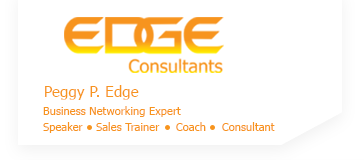
Sales: Cardinal Rules of Selling
Recently I was reading an article about sales sins. Since I like to work in a positive manner as much as possible, here are a few helpful pointers about sales that we must keep in mind when we are in the marketplace:
- Listen between the lines – instead of running your mouth, try to figure out what your prospect or client is implying in their conversation with you.
- Sell benefits and value proposition from the customer prospective –look at the need of the client. You must ask yourself, what benefits will he experience and what is the value proposition in the eyes of the client…not your eyes.
- Be proactive in your sales process – always ask for the order.
- Make sure you are talking to a prospect and not a suspect – If you have done your homework, you will know:
- Who the final decision maker is
- What products and services to present
- How you are going to present the recommendations and justifications that fit the prospects needs.
- Create client advocates – an advocate is someone who will promote, talk about, recommend you to others. In Carl Sewell’s book, “Customers for Life” he talks about under promising and over delivering is just one way to create those life-long advocates.
“Getting ‘THE EDGE’ over Your Competition!!!”
Peggy P. Edge © 2014
Networking: 30-Second Commercial for Consultants and Service Industries
If you are a consultant or sell a service like IT services or financial services, describing what you do for a living in a 30-second commercial is sometimes difficult. Finding the right words to explain, in laymen’s terms, the service you provide can be challenging.
For example, if you say, “I am a Business Coach.” This does not give me enough information to “get it.” What do you really do?
If you say, “We help companies cut their expenses and increase their bottom line.” This statement not does not provide enough information to clearly understand what you do or how I might be able to help you with a warm referral.
Why? Because no matter what you or I sell, we all help our clients cut costs so they can make more money.
The Key Step to developing an effective 30-second commercial is to:
Give an example of how you have helped a client.
For example: The HR Director at Smith Insurance Company was having 1-2 issues (name them off) with their employees. Then explain 1-2 solutions that you recommended or were implemented.
Keep in mind the main purpose of a 30-Second Commercial is to be able to relay in common terms: who is your target market; what product or service you offer; and why you can solve the problem–your value proposition.
Therefore, if you are a consultant or provide some type of service, always include detailed descriptions of:
- how you have identified a problem;
- developed a strategy of remediation; and,
- been successful in the implementation.
Finally get in front of the mirror, your dog or cat; practice-practice-practice; and time yourself. After all, a 30-second commercial is not a dissertation…it’s only 30-seconds.
Peggy P. Edge (c) 2014
Sales: Face-to-face interaction
“Rapport is not developed over the telephone. Face-to-face interaction develops long-term business relationships.” Byrd Baggett.
In sales, building and developing long-term relationships are critical to growing your business. Consequently this statement about face-to-face interaction by Baggett back in 1997 is still so very relevant today to your success not only in sales but also in life.
With everyone using electronic devices to communicate these days, our society is becoming a group of people who do not know how to carry on an intelligent conversation with another person.
In an article by Virginia Acacio, “The Benefits of Face-to-Face Communications” she talks about the fact that when we communicate directly with one another, issues get handled and decisions made much faster than trying to exchange a multitude of emails or texts. There are some things that simply can’t be relayed accurately, accomplished over the telephone or through an email or text.
Further, Acacio, discusses the merits of being able to determine the non-verbal communication that goes on when you are face-to-face. Obviously you can’t discern much of anything unless you get in front of a client or prospect. “It’s said that over 90% of how we communicate is through nonverbal cues like gestures and facial expressions.”
Recently a friend of mine was talking about her pre-teen son who had a friend over to their home for a visit. They were both sitting on the sofa texting to each other! I was absolutely amazed at this behavior.
What can we do to turn this around?
We have a responsibility to teach our young people to put down their electronic devices and engage one-on-one with one another. We must teach them that being face-to-face, carrying on a conversation is still the most effective way to build and develop strong relationships.
Peggy P. Edge (c) 2014
Excerpts taken from: “The Pocket Power Book of Performance” by Byrd Baggett ; Article by Virginia Acacio, “The Benefits of Face-to-Face Communication” (http://bluejeans.com/blog/benefits-face-to-face-meetings)

